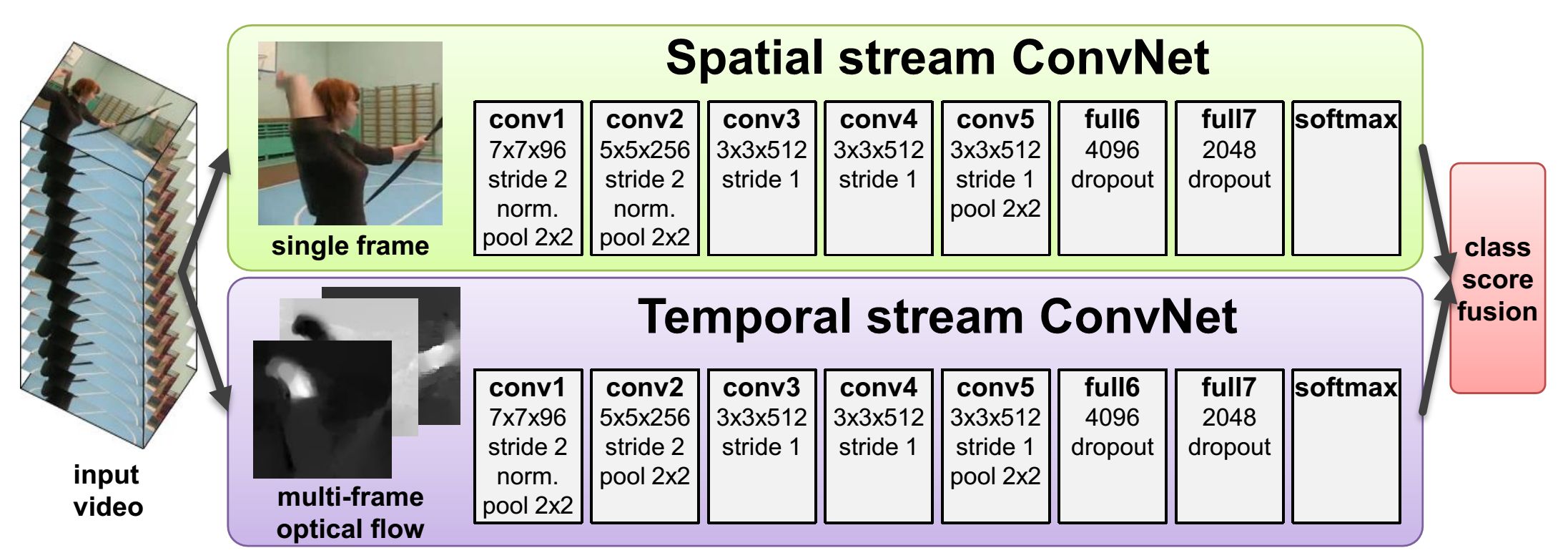TITLE: Two-Stream Convolutional Networks for Action Recognition in Videos
AUTHOR: Simonyan, Karen and Zisserman, Andrew
FROM: NIPS2014
CONTRIBUTIONS
- A two-stream ConvNet combines spatial and temporal networks.
- A ConvNet trained on multi-frame dense optical flow is able to achieve a good performance in spite of small training dataset
- Multi-task training procedure benefits performance on different datasets.
METHOD
Two-stream architecture convolutional network:
- Spatial stream ConvNet: take a still frame as input and perform action recognition in this single frame.
- Temporal stream ConvNet: take a 2L-channel optical flow/trajectory stacking corresponding to the still frame as input and perform action recognition in this multi-channel input.
- The two outputs of the streams are concated as a feature to train a SVM classifier to fuse them.

SOME DETAILS
- Mean flow subtraction is utilized to eliminate displacements caused by camera movement.
- At test stage, 25 frames (time points) are extracted and their corresponding 2L-channel stackings are sent to the network. In addition, 5 patches and their flips are extracted in space domain.
ADVANTAGES
- Simulate bio-structure of human visual cortex.
- Competitive performance with the state of the art representations in spite of small size of training dataset.
- CNN with convolution filters could generalize hand-crafted features.
DISADVANTAGES
- Can not localize action in neither spatial nor temporal domain.